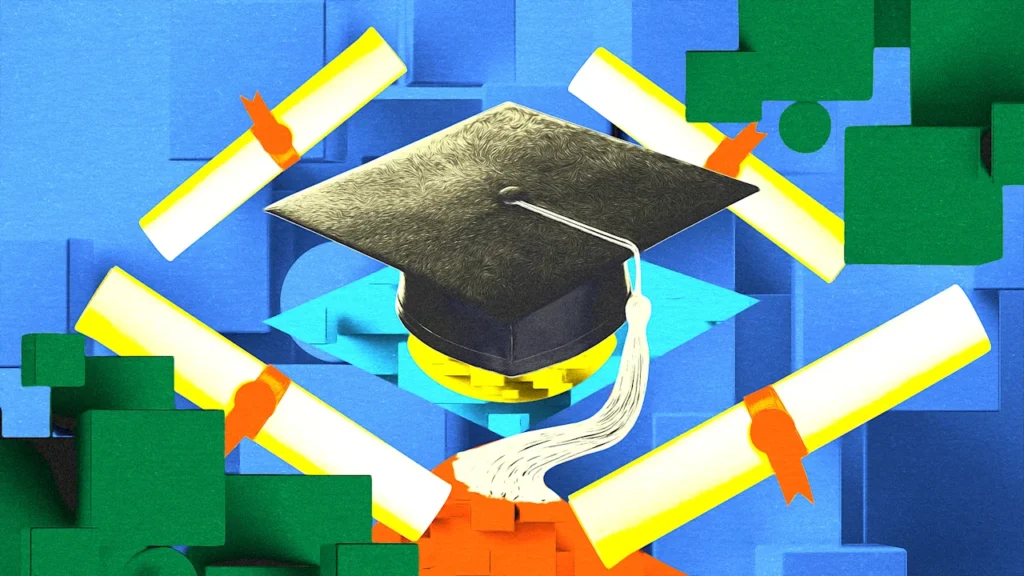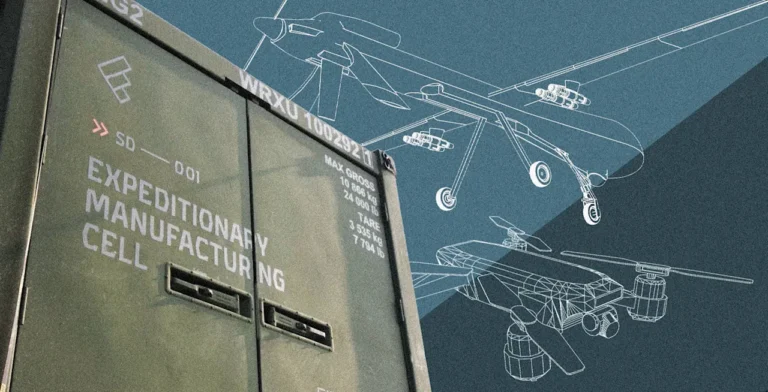
As the largest art and design school in the United States—with nearly 17,000 students enrolled at its Savannah and Atlanta campuses—the Savannah College of Art and Design prides itself on offering a course of study for almost every type of creative person. Along with degree programs in animation, film and television, game development, graphic design, and illustration, SCAD tempts students with courses in beauty and fragrance, sneaker design, luxury and brand management, and equestrian studies.
There’s a new degree program this school year, in Applied AI, that is attracting a different sort of attention. As I learned directly from faculty, students, and industry veterans, and read on Reddit forums, the idea is enticing to some—and prompting others to question the school’s priorities and its very reason for existing.
Using AI “Right”
The idea behind the Applied AI program at SCAD is to . . .
. . . equip students with the knowledge and skills that employers want: SCAD’s website boasts that within a year of graduation, 99% of students are typically employed, pursuing further education, or both.
According to SCAD, the Applied AI program will prepare students for professions including AI product developer, AI design strategist, AI story engineer, autonomous agent designer, and “ethical design strategist.” SCAD is also offering a minor in Applied AI that’s open to students across all majors.
This is a “researched best guess” about a changing employment landscape, says Nye Warburton, chair of interactive design and game development at SCAD, who leads the Applied AI program. “Our assumptions are that AI will create new domains in product development, design, story, and ethically focused systems. Our major is designed to develop the skills and practices that we see emerging in those fields.”
Guided by input from creative and design leaders in industry, the Applied AI curriculum was developed by Warburton in collaboration with SCAD’s curriculum and assessment team, the deans of the school of creative technology and the school of animation and motion, and various professors and department chairs. It has three pillars: story, action, and impact.
“We already have foundational and general education classes at SCAD,” says Warburton, referring to offerings such as drawing and design thinking, math and English. “So if you’re a writer or an architect, or whatever, you still need to have those fundamental understandings.” The AI “story” classes, he stresses, are not about that kind of basic storytelling, but aim to help students “build more resilience and understanding of their purpose”—what they want to use AI for—as they move forward.
The “impact” component of the program involves making sure students understand intellectual property, environmental issues, and other broad concerns about the use of AI. The last component of this is an “impact test,” currently in development, that students will have to pass after their sophomore year. “We don’t let you go to the higher levels—designing AI agents and doing capstone work—until you’ve placed out of these civics classes.”
The “action” part of the program looks at “workflow practices and application-specific ways of using them,” says Eric Allen, associate chair of interactive design and game development and an instructor in the Applied AI program. Major game studios, for example, “are already using AI models for generating and amalgamating ideas,” he says. “And, of course, they vibe code, building plugins that can help them in their workflows.”
SCAD aims to engage faculty from across the school to teach these interdisciplinary classes, focusing on uses of AI that are most relevant to their fields. In addition to current faculty who will teach these cross-disciplinary classes, SCAD is in the process of hiring a dedicated Applied AI faculty.
“One of our main goals for curriculum development is to embrace design and art workflows and push [them] further with applied AI learnings,” Warburton says. “It is an opportunity to invent new collaborative interdisciplinary things. And my hope is that that’s where the jobs will be—in the intersection between these disciplines, even if traditional disciplines become disrupted.”
Disruption and de-skilling
Of course, AI is already disrupting fields like gaming, film and animation, graphic design, and copywriting. In a 2024 State of the Game Industry report from the Game Developers Conference, 84% of developers indicated that they were somewhat or very concerned about the ethics of using generative AI, which has already contributed to large-scale layoffs in the industry. According to an industry tracker, an estimated 14,600 people were laid off from game development positions in 2024, up from 10,500 layoffs in 2023.
“Generative AI is an automation technology, full stop,” says Reid Southen, a concept artist whose credits include movies The Hunger Games, The Woman King, and Matrix Resurrections. While he agrees that there are cases where AI tools can speed up certain tasks and potentially benefit artists, he says, “There’s no world in which it creates jobs.” He and other artists are reporting less work and lower pay—and they’re increasingly asked by clients to fix up concepts originally created with AI. Adding insult to injury, image video-generating models such as Midjourney, Stability AI’s Stable Diffusion, and Open AI’s Sora are all facing lawsuits over the alleged use of copyrighted imagery in their development.
Another concern is that AI will lead to a broad de-skilling. “As an artist, you make thousands of micro-decisions while making a piece of art,” Southen says. “Every brushstroke or click is a choice, and both you and the work evolve throughout that process. With AI, you give it a few large decisions about what you want, and it makes all those micro-decisions for you and fills in all the gaps.”
Warburton understands the threat to artistry and industry know-how. “I think it is an obligation to vehemently defend the expertise that we have. The friction is, How do you use these new tools to augment these skills, as opposed to just prompting your way through it? I’m worried that we’re not going to have a senior level of talent in the future,” he says, noting that junior-level designers won’t learn how to make creative decisions.
Enthusiasm varies
For these reasons and more, enthusiasm for the new AI curriculum varies widely among SCAD faculty and students. Many in industrial design, UX, architecture, and interior design “are proactively moving forward in AI,” Warburton says. “They have a clear idea of how they can integrate it into their processes. The business classes are really interested in how we do simulations and predictive models. I thought photography would be way against it, but a lot of the professors said they’ve already been disrupted by digital, so they’re kind of ready for [AI].”
On the other hand, he says, “I’m not a very popular human being in certain majors”—such as illustration and sequential art (comic books, graphic novels). “What I hear a lot is, ‘I can’t make a graphic novel with AI because the publishing industry will never accept it.”
The school’s animation department is ambivalent. “The animation professors are really into it, because they see the possibility of the pipeline accelerations like rigging and compositing and different kinds of rendering. However, the students are very against it,” Warburton says, noting that students express concerns about the use of artist data in training generative models, and issues with AI’s environmental impact. “However, I personally believe that automation anxiety is the root.”
Since the program was announced this fall, four students have declared Applied AI as their major, and 25 have declared it as their minor. (The first official Applied AI class, AI 101—featuring exercises in developing a personal story, and a crash course on LLMs and image models—starts this winter.) The school expects the number to increase significantly next academic year.
“A cold day in hell”
As always, the most honest discussion seems to be happening on Reddit. “The general consensus among students here is that the ai major is a joke. and so are the bots studying it,” writes Redditor @sunadherstars.
“I just graduated from the SEQA [sequential art] program like this past quarter and let me tell you: it’ll be a cold day in hell before they ever push AI,” writes @electricaaa. “The entire department is extremely against it, no matter how much the administration tries to push it.”
Still, there’s no doubt that for companies hiring creative talent, familiarity with AI is high on their wish list. Ami Frost, who will graduate from SCAD with a BFA in industrial design in December, reports that “that’s a recent shift. Some friends have actually gotten jobs because they know AI. I think learning how to use AI is definitely going to be a good stepping point in your career, like it or not.”
“Taking a few extra classes to get better at AI makes sense,” says a recent SCAD graduate in UX and industrial design, who preferred not to give their name in order to be able to speak more freely. “But a degree drastically impacts the trajectory of your life. Would you want to choose something based on the hottest trend? Imagine if [SCAD] had started offering a major in NFTs when those were the next big thing. I think AI is too new to really have had the time for a robust education on how to use it to emerge. Personally, I’d rather wait for a boat to be fully constructed before taking it for a four-year ride down the Nile.”
SCAD’s critics have often felt that the school operates more like a business than a traditional academic institution (even though it operates as a nonprofit). For the fiscal year ending June 2024, the school reported revenue in excess of expenses of more than $220 million, and president and founder Paula Wallace received compensation of more than $2.6 million. (Yearly undergrad tuition and fees, minus room and board, is currently $42,665.)
But while it may be tempting to write off the Applied AI degree as a slapdash money grab, it’s worth noting that SCAD’s rivals are increasingly AI-curious. ArtCenter College of Design in Pasadena, California, and Rhode Island School of Design in Providence both offer classes that integrate AI. Last year, Ringling College of Art and Design in Sarasota, Florida, launched an AI certificate program similar to SCAD’s minor.
Perhaps today’s new generative AI tools will become like once-novel programs such as Adobe and CAD, absorbed seamlessly into the design process. If they take designers’ jobs, though, or thwart students’ ability to learn the basics, there may be no one left to use them.
